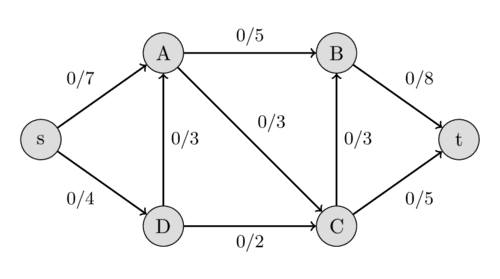A company launched a new gadget C to be produced globally for North American and South American markets.
The company uses just-in-time as a logistic strategy with no warehouse. Still, it has a quality control standard with the assistance of laboratories in the United Kingdom, Spain, and South Africa.
The company has some contractors in the Asia-Pacific region that make two types of components, A and B, to create the C product. In order to produce one container of product C, two containers of component A and three containers of component B are necessary.
In the graph above, we show the logistic circuit of factories, ensemble centers (located in Singapure, Dubai , and Egypt), quality control labs, and consumer centers for this operation. The production flow of component A (blue arrows), component B (red arrows), and the distribution flow (purple arrows) is shown. The numbers near the arrows show the capacity to transport from one location to another.
Which of the statements below are compatible with a production and distribution scheme in the manufacturing supply chain that delivers the maximum quantity of gadgets while producing the minimum amount of components?
- New York gets 20 gadgets, Japan produces 42 components B, and Australia produces 22 components A.
- Sao Paulo gets 9 gadgets, India produces 75 components B, and Hong Kong produces 50 components A.
- Sao Paulo gets 10 gadgets, India produces 74 components B, and Hong Kong produces 45 components A
- New York gets 18 gadgets, Japan produces 40 components B, and Australia produces 20 components A
Chose the right answer.
- I
- I and II
- II and IV
- III and IV
- None of the above.
Original idea by: Alexander Valle Rey









.png)

